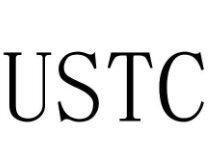a16z: What are the major issues that will be resolved in 2022?
In 2021, financial services will continue to respect this period. Fintech turnover exceeded all previous years. This is a significant year for fintech IPOs, and major fintech mergers and acquisitions have reached record levels as well. . Before the end of the year, we had one of the biggest IPOs of financial companies, Nubank, which raised $ 2.6 billion (as the largest digital company), which is one of the largest financial institutions. 29 billion. and Wise for $ 29 billion. This is the first direct recording in the UK. , Coinbase was first written directly as a financial service / cryptocurrency service, and has various financial SPACs.

What are the main problems that fintech can solve in 2022?
1. Fintech x Crypto-monnaie
1. Access to low carbon technologies to all financial services
Twenty years ago, the question "Are you an Internet business?" is a common question. Today (almost) most business ventures are online businesses. Even 10 years ago, the term "mobile phone company" became popular, but now it is a constant problem. Likewise, we will soon be asking "Are you a cryptocurrency company?" Because most companies new to the financial services industry usually have cryptocurrency products.
As cryptocurrencies grow in the minds of consumers, financial apps are adding crypto products to the growing portfolio. For example, Robinhood started as a stock broker and now supports some cryptocurrency markets, some new banks are letting their clients make more money through DeFi (decentralized finance) and the big banks have provided cryptocurrency products. He is in the early stages of experimentation. By 2022, more cryptocurrency infrastructures will be created for transactions, wallets and value-added services, storage and more, enabling consumers to continue to integrate and manage fiat and crypto financial life. cash. We'll also see a new wave of backend cryptocurrency infrastructure and fintech companies that others are calling DeFi mules (fintech first, DeFi next).
Angela Strange, General Partner of a16z Fintech and Sumet Singh, Business Partner of a16z Fintech
2. The web3 community will be one of the main supporters of the midterm elections in the United States.
At the end of the year, 1 in 5 U.S. voters had access to cryptocurrency. According to a recent poll we conducted, the future of the Web3 and the Internet will affect many voters in the 2022 midterm election in the United States.
The voters of Web3 are young and diverse. 79% of millennials, 73% of Hispanic voters, and 79% of black voters will vote for candidates supporting Web3's expansion. Most of these voters are elderly after the Great Depression, and many come from communities that have been neglected in their efforts to promote wealth for generations. They are looking for cost effective ways to change the current financial system. This allows them to manage their own funds and provide investment options for community activities that are not overseen by traditional financial institutions.
So what are these voters proud of? They want policy makers to listen to laws and regulations to tackle bad behavior and illegal behavior and not disrupt Native American affairs. They want policy makers to support and engage with our nation in technology. They too believed that web3 gave users control over their data. They believe web3 can support American culture around the world. They also want the government to play a key role in supporting the community with the web3 platform.
There is no doubt that web3 will play an important role in next year's election, and the developers quickly knew it.
Tomicah Tillemann, Director of Global Cryptocurrency Policy a16z, and James Rathmell, Cryptocurrency Consultant a16z
3. Community investment platform
What do GameStop Legends and ConstitutionDAO (except Citadel's Ken Griffin) have in common? They all realize that there is a need for internet users to come together to use their funds for a bigger purpose, whether it's running a financial business or buying a publication.
In 2022, we will see more multi-stakeholder and community business platforms that will support the integration of online culture. We can see many products in the construction here. It's different from other parts of the community. So instead of having leaders and the ability to keep up with business, he created new business products such as assets, voting, and reconciliation. Whether it's a business venture, increasing social and environmental goals, or a joint venture to buy shared assets. These products are great for racing games, integrated deployment, and the ability to add fun and engaging content.
Sumeet Singh, 16z Financial Technology Business Partner
2. Fintech x Health
Every healthcare company is a FinTech company
As mentioned earlier, fintech products allow vertical SaaS companies to differentiate themselves into new revenue streams. On the medical front, a system that represents 20% of US GDP, we see three areas where FinTech could provide major economic momentum in 2022: consumer spending, goods and loans, significant resource resources, and insurance. Health and medical payments are particularly difficult due to payments by third parties in the United States, service providers, reimbursers, and consumers. Therefore, a solution like Stripe may not be able to provide all of the procedures necessary to support overall health, such as health compliance and participation. This provides an opportunity for payment gateways and financial products in certain verticals, such as 'buy before you pay' (BNPL), which helps users manage their healthcare financially and reduce the risk of business ventures. due to unforeseen health insurance.
At the point of sale, BNPL may increase the collection rate, which can drop as low as 20% in some areas. It also standardizes its business model to a 'Monthly Member' (PMPM) approach by allowing healthcare organizations to take risks and improve their capital expenditures for new products, resulting in income disparities and of income.
Finally, the separation and redistribution of health insurance has always created a new financial technology platform that supports the development of new insurance products for individuals and businesses. These companies adjust insurance policies, financing, business management, and business applications to help businesses manage the way their insurers do business.
As financial devices enter the medical and software space, we see the potential to alter support processes and eliminate inefficiencies, paving the way for treatment processes. Pain is more beneficial.
David Haber, general partner, 16z Financial Technology, Julie Yoo, general partner, 16z bio
3. Fintech x Sustainable Development
Fintech towards zero carbon
Now did you know that the default Google Maps settings guide you through maximum fuel mileage? Or I have a “Paperless statement” checkbox on my invoice, how do I open an account? The configurability accounts for this as advancements in FinTech. Consider the following crate. Debit card replacements, debit card, ACH, PayPal, BNPL, and all the different payment methods available in 2021 will tell you which method is not good for a business environment. Or better yet, it includes the ability to offset emissions for whatever path you choose by adding x dollars to your purchase. Improvements in emissions data infrastructure and technologies have made this possible faster. Companies such as Patch, Capture and Wren have enabled businesses and consumers to better understand and increase their security footprint when authorizing payment centers, banks. Fresh money, logistics companies, and many businesses include carbon offsetting options in their finances. in the product.
But he'll also see what makes consumers choose greener products or more convenient shipping methods. Just as Google Maps' green route may be the slowest, green options for business today seem to be the most expensive. Launching the intersection of security and financial technology requires the development of new incentive models that make choosing a user-friendly environment more responsible, affordable and profitable. Think about higher interest rates, lower interest rates, better returns, or lower costs.
One of our favorite collections of creative partnerships in this area comes from Powerledger, the blockchain platform for the peer-to-peer energy industry, and Carlton United Brewery, the company that stocks Australian beer. While Carlton set a goal of boosting renewable energy by 2025, he worked with Powerledger to create an imaginary, beer-like, eco-friendly loyalty program. Swap multiple barrels. Carlton consumers can save and use excess energy from solar panels in exchange for beer delivered right to their homes.
Mark Andrewsko, Financial Technology Business Partner a16z
4. Interest in FinTech
1. Overcome CAC Gains Through Collaboration and Product Development
Over the past few years, we have seen a significant increase in consumer digital content (FB and GOOG) due to increased competition and changes such as Apple's tough announcement. To further strengthen competition, most FinTech companies focus on the same consumer characteristics (subprime loans), offering the same products (such as banking, equity, loans) and funding from multiple customer sources. !). So, in 2022, how will companies differentiate themselves in the face of increasing competition and limited access to digital?
We believe there are two answers. The best companies will be able to achieve growth from the product base that is necessary for product growth, or through partnerships that represent a distributed nonprofit market.
When it comes to commodities, commodities today become tomorrow, and they don't stand out by offering a bank or brokerage account. Indeed, the new API will affect the key functions of the bank (savings, consumption, loans, investment, etc.). ) is very easy to integrate into almost any application. Instead, products that capture what consumers think will allow communities, cryptocurrencies, and businesses to fundamentally innovate and thrive. In particular, we hope that more competitive sports equipment will lead to more product development. The results themselves are competitive sports (trade average!), But so far financial tools have been the focus of soloing.
In terms of partnerships, we saw the partnership between Credit Karma and the Houston Rockets, the partnership between Chime and the Dallas Mavericks, the distribution agreement between Guideline and Gusto, and the distribution agreement between Melio and Intuit. While these channels have leverage rates and can increase in value over time, they represent estimates and amounts of revenue and purchase that modern digital marketing channels don't always have. The developers hope that companies with the best history of direct marketing to current consumers seek business improvements and partnerships to achieve desired success. Stable growth, a model that will continue until 2022.
Anish-Acharya, general partner of A16Z Fintech
2. More financial technologies will emerge in new markets.
This year, new markets have seen a booming economy, fundraising and recovery. In particular, the NuBank brand is a current in Latin America and international finance, that is, a major exodus from Latin America, followed by a group of developers. 2022 will bring new investment and growth to financial services in emerging markets. Some key points can be observed in new markets.
Historically, new businesses have had a lot of B2C financial technology, but now they have seen a lot of B2B applications, like helping small and medium businesses and consumers to digitize and improve payroll, pay employees better, buy supplies, money and to protect themselves. . you will see
Second, the new API now allows businesses to make payments, access banking information, problem cards, bridge cryptocurrencies, authentication, and more. Instead of implementing a single integration with existing financial systems, companies can integrate modern processes to create new financial products at a lower cost. There should be enough demand to justify the new process, and we have already started doing this in our ecosystem.
Third, new export models will increasingly draw inspiration from new entities other than the United States and Europe. Certain business models and procedures work best for all new markets based on existing user characteristics, policies and digitization stages. For example, many local B2B businesses (including financial art) have sprung up in India and Latin America. These markets do not exist in the United States or Europe. Part of the reason is that these companies are good for small businesses, and in these emerging markets they are often expensive and volatile. We have seen a successful combination of business models such as super apps (such as consumers and businesses) and community retailers, and features such as investing apps that started from cash rather than cash. business.
We have seen interactions between entrepreneurs in this area. We met the developers of Small Business Accounting Infrastructure in São Paulo and they received regular updates from colleagues in Jakarta via WhatsApp. Lagos entrepreneurs are looking for business model inspiration for Karachi B2B marketplace. The new disease is spreading faster than many technologies, but has declined worldwide.
Seema Amble, a16z Financial Technology Partner, David Haber, a16z Financial Technology General Partner, Gabriel Vasquez, a16z Financial Technology Partner
3. MGA in the insurance industry is refocusing on financial matters.
Most of the first wave of insurance startups focused on converting old offline processes to the Internet without touching most of the underwriting procedures. In a long term low cost environment, insurance companies are willing to try new businesses and strategies to find the benefits. Additionally, compared to other companies, the insurance industry startup ecosystem is small and many stakeholders may view new entrants as competitors to learn and try out new ideas. As interest rates rise and markets are turbulent, the new goals of diversification and insurance gains become more important, attracting new entrants to focus on insurance coverage.
Joe Schmidt, A16Z Fintech Trading Tus khub
Note: The views expressed in this document are those of AH Capital Management, L.L.C. ("a16z") and neither of a16z nor of its affiliates. Some of the information in this document was obtained from third party sites, including companies operating with 16z funds. Although provided by reliable resources, 16z is unable to identify personal data and has no comment on its long-term accuracy or its implications for a particular event. In addition, this content may contain a third party ad and a16z has neither reviewed nor rejected any ad.

Scan QR code with WeChat






























